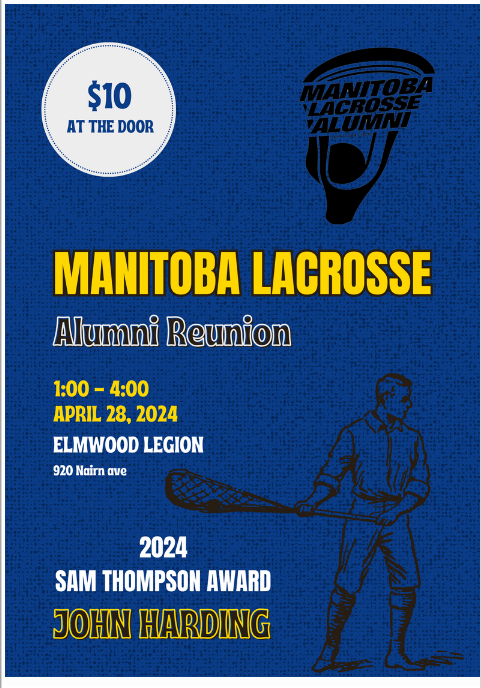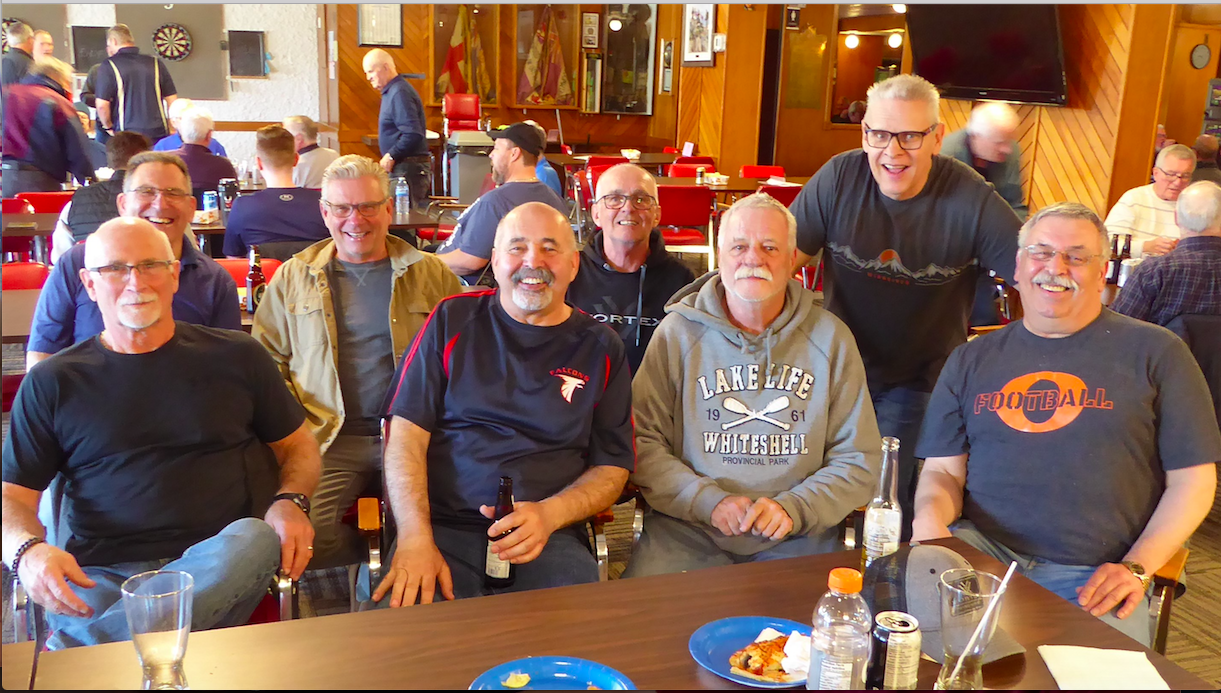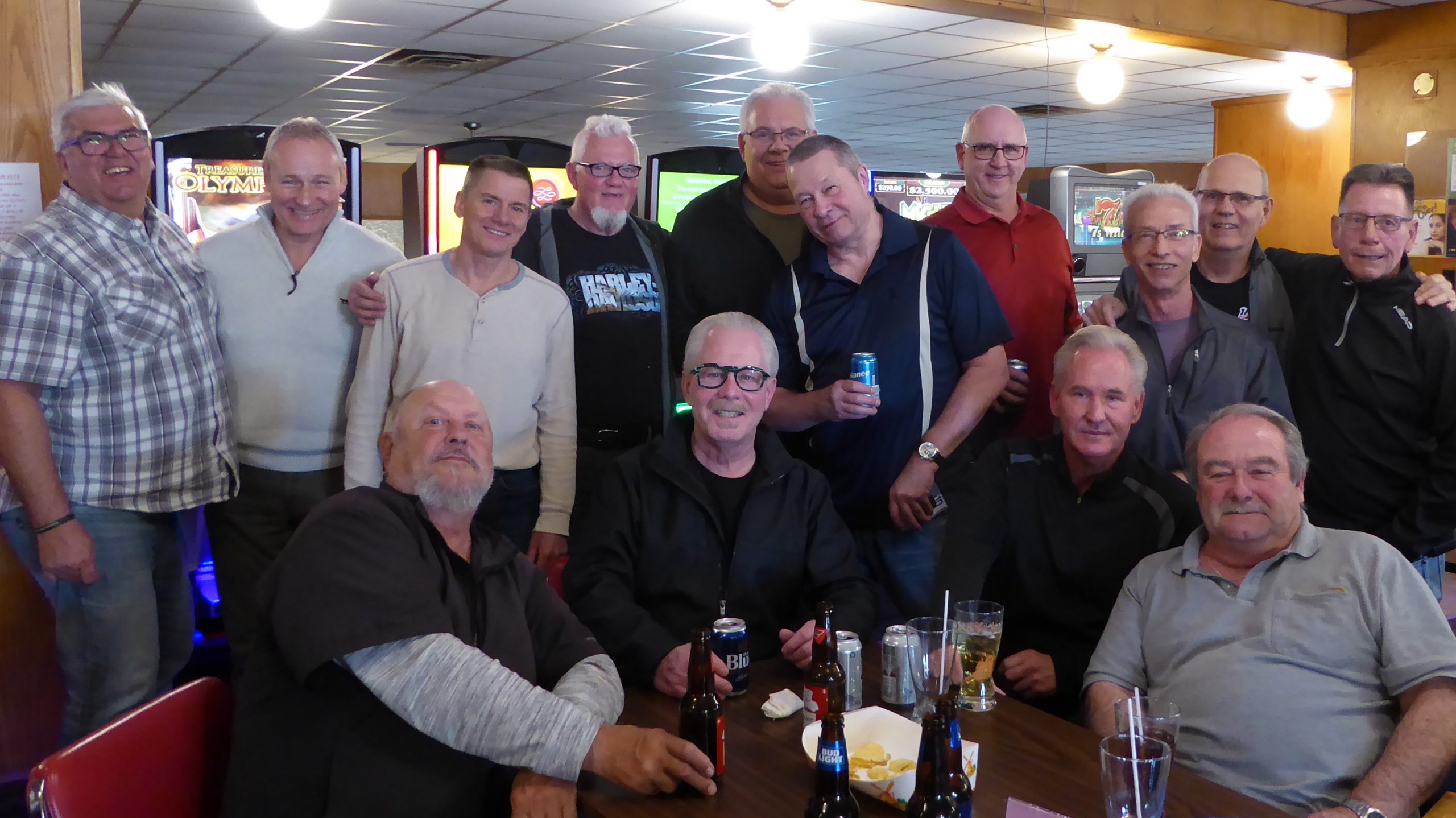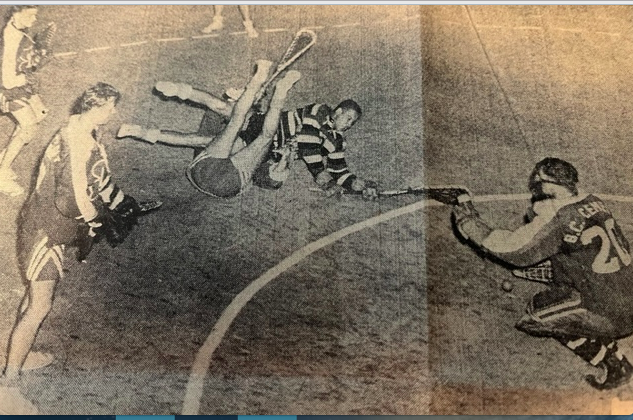GOLDEN ERA OF LACROSSE IN MANITOBA
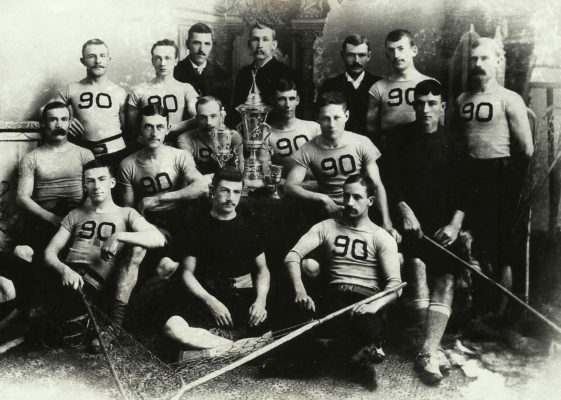
In the early 1900's the game was 12 player aside Field Lacrosse. It was played across Winnipeg and in the small towns of South West Manitoba, by immigrants from Southern Ontario, attracted by the economic opportunity provided in the West. A game in 1904 between the Winnipeg Shamrocks and the Souris team attracted over 10,000 spectators to the Old Exhibition grounds. The game continued to grow as the Winnipeg School Division organized leagues for elementary, junior high, and senior high schools. The school division further fostered the growth of game by subsidizing the cost of the lacrosse sticks.
Here is Vince Leah's article describing the Golden Era of lacrosse in Manitoba:
WHEN LACROSSE WAS GREAT
There was a time in our town, and perhaps in many other Manitoba towns that holidays such as Victoria Day and Dominion Day were celebrated with fireworks, band concerts, torchlight parades and a lacrosse game.
With a local committee hard at work setting up a Manitoba Lacrosse Hall of Fame to honour the stars of what the Indians called baggateway, research reveals lacrosse, as a sporting attraction, had the same impact upon the citizenry as a winning Blue Bomber football team of more recent seasons.
The period from 1885 to the First World War was lacrosse's boom period. Writing in 1920, Joe Fahey, who was noted for his work in track and field circles, said: "Of all the sports that have gripped this town, none have gripped it like the great national game of lacrosse did between 1885 and some years afterwards.
When the 90th Regiment and the Winnipeg Lacrosse team would battle for supremacy in Dufferin Park the whole city would turn out. I have seen the park and every house, tree and vantage grouped around it, fairly alive with people and there were very few boys around the city who did not have a few shillings bet on the result. I have seen both teams come down Main Street on the afternoon of the game in their four- horse tallyhoes followed by hundreds of fans on their way to the park. Every man on both teams had his personal following and the boys who played on the 90th or Winnipeg lacrosse teams were the heroes of the town."
Ed Drewry, whose foresight, helped bring about metro Winnipeg's wonderful parks system, presented a trophy for competition between the two teams who battled in the beginning on the old driving park on Broadway which later became the University of Manitoba site. Isaac K. C. Pitblado, one of Winnipeg's most renowned athletes in the early days, remembered the names of some of the old players, Joe Lemon was captain of the Winnipegs and Ed Barrett for the 90th. Other names, equally prominent in other affairs at a later date- KC Harvey, Rev. T. J. McCrossin, Dr. R S. Munn, Alex Dunlop (I believe he was the founder of the Neepawa Press) Abe Code, Oscar McBean, Jim McDonald, Rod McLennan, Dan Bain, A. M. Stowe, Dolph Graham, Ted Wasdale, Frank Morgan, Whitey Merritt, Charlie Redmond, Jack Mulvey, Harry Finch, Bob Moss and Fred Higginbotham. The last-named was an early hockey star of note who was accidentally killed on Joe Hall's property on the Red River in what is now Fort Garry. McCrossin was an early student at old Manitoba College. John W. Dafoe, Canada's distinguished man of letters, was a youthful president of the Winnipeg team.
Later, teams such as Nationals, Shamrocks, Boilermakers, Argonauts Fort Rouge and Wellingtons came into being as lacrosse enjoyed another period of prosperity at Main Street Stadium on South Main Street. The spirit was so intense the teams began to import stars from British Columbia and Ontario but strangely enough, Winnipeg never won a national lacrosse championship in any division.
Some people say rough play brought about lacrosse's decline of 40 years ago while others blamed a school board decision to take the game out of the schools. It was the big springtime pastime and on a Saturday morning you could see youngsters in any corner of the city marching off to play lacrosse with their sticks over their shoulders. The schools sold lacrosse sticks in those days for 75 cents apiece. Now the cheapest stick you can buy costs around seven dollars. The 12-man game, still played in England and Australia, was the vogue, but when the game was dropped from the schools' sports program minor lacrosse withered along with it. When the Manitoba Lacrosse association began a brisk program of promotion a few years ago there were many youngsters who had no idea what a lacrosse stick looked like. They kept referring to them as "bats" when the correct name is "lacrosse" and not even 'stick' because the French, who compared the Indians' stick with a bishop's crozier called it a "lacrosse."
Lacrosse also was popular in many other Manitoba communities years ago. As recently as 1932, Rapid City, a quiet Western Manitoba village, which lost its early hope to become a major city when the Canadian Pacific Railway swung its main line further south, challenged for the provincial senior championship. The Rapid City lads were soundly beaten and were not heard from again.
Next week's article will focus on the most successful team of this golden era- the 1904 Olympic Gold Medal winners, the Winnipeg Shamrocks.

